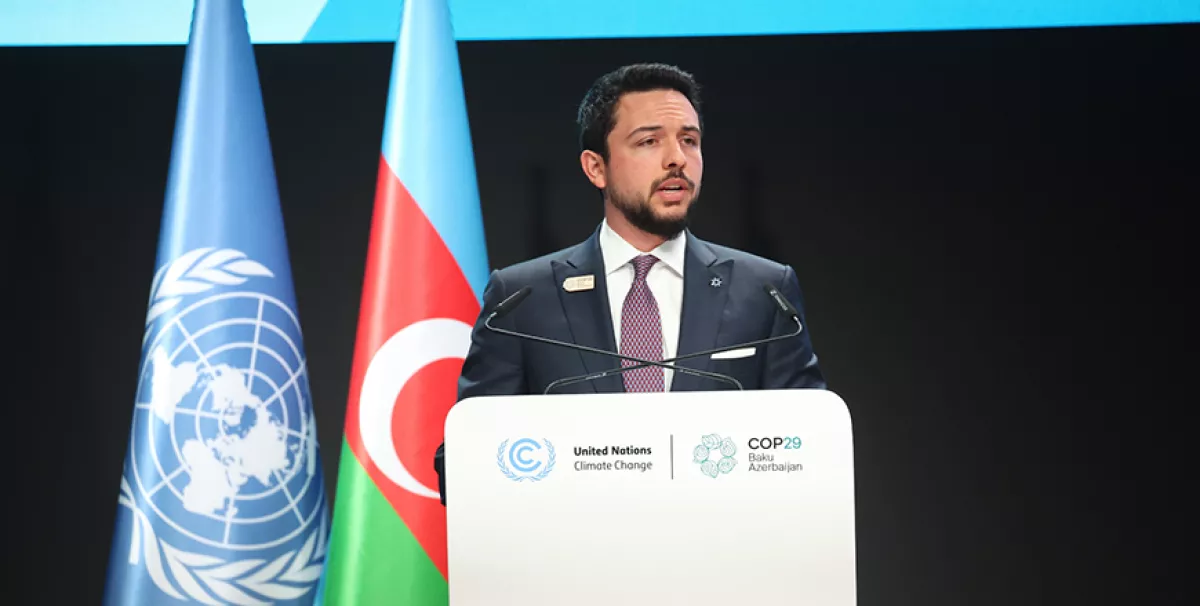COP29: Clean energy catalyst for stability, recovery in conflict zones Article by Arab News
Saudi Arabia-based Arab News has published an article on the climate conference (COP29) underway in Baku. Caliber.Az reprints the article.
As COP29 progresses in Baku, attention is turning to the ways in which clean energy can transform post-conflict recovery efforts, bringing both environmental resilience and social stability to regions affected by war.
This year’s discussions have highlighted how renewable energy offers more than environmental benefits, having the potential to catalyze economic recovery, improve living standards and build long-term resilience in areas most vulnerable to conflict.
Renewable energy in conflict recovery: A new dimension of aid
Experts have highlighted how sustainable infrastructure can reduce dependence on foreign energy imports and fuel local economies in war-torn areas.
Hafed Al-Ghwell, a North African geopolitics expert, said in an interview with Arab News that “clean energy isn’t just about generating power; it’s about autonomy and resilience.” For regions dependent on volatile foreign fuel supplies, renewables offer a more stable power source that strengthens local autonomy.
Gilles Carbonnier, vice president of the International Committee of the Red Cross, highlighted the critical role of renewable energy in supporting communities severely affected by both conflict and climate change.
“The people who are most affected by climate change risks are those who live in zones of armed conflict and have the least capability to adapt and face these risks,” Carbonnier said.
He described how the ICRC is using solar power to help protect communities from droughts, floods and extreme weather across the Sahel, the Horn of Africa and the Middle East.
“What we need is to scale these efforts, which means directing much more climate funding to conflict zones,” Carbonnier added.
This local approach provides immediate aid while laying the foundation for sustainable recovery in areas struggling with limited resources and infrastructure damage.
Gaza: The intersection of war and environmental crisis
The war and occupation in Gaza represents a severe environmental and humanitarian crisis.
Crown Prince Hussein of Jordan addressed COP29. In calling for global solidarity with Gaza, he said: “Saving our planet must start from the premise that all lives are worth saving.” He described how the war is “compounding environmental challenges for Gaza and beyond.”

A recent UN Environment Program report highlighted severe contamination of Gaza’s land, water and air due to the destruction of critical infrastructure, including sewage and waste systems, leaving communities surrounded by hazardous debris.
Carbonnier said that Gaza is emblematic of the dual crisis faced by many conflict zones, where war intensifies environmental damage and deepens humanitarian challenges.
“In Gaza, conflict has degraded critical infrastructure to the point where basic resources like clean water and electricity are scarce,” he said.
“Renewable energy solutions, such as solar micro-grids, could offer essential relief by providing stable power to hospitals, schools and homes,” he added.
In Gaza, solar micro-grids deployed by NGOs are already providing essential power for hospitals and emergency shelters, offering a sustainable alternative to fuel imports which have been blockaded by Israeli forces since the conflict began.
Resilience through clean energy infrastructure
Renewable energy infrastructure, particularly solar and wind power, is highly adaptable to conflict and post-conflict settings due to its low maintenance requirements and modular design.
Solar panels and wind turbines require minimal upkeep and their modular nature allows for incremental infrastructure development as security improves.
This approach has proved effective in Syria, where solar-powered microgrids are supplying power to refugee camps, providing consistent electricity for vital services like sanitation and healthcare.
According to Carbonnier, these microgrids “reduce dependence on often costly and dangerous fuel deliveries and stabilize power supplies for communities under stress.”
Renewable energy microgrids are now recognized as a cornerstone of humanitarian aid, offering stability to populations affected by protracted crises.
Policy implications and international support
For renewable energy to become a reliable tool in post-conflict recovery, coordinated international support and robust policy frameworks are essential.
Azerbaijan’s lead COP29 negotiator, Yalchin Rafiyev, highlighted the need for financial support specifically directed at conflict zones. “Bridging the gaps between climate finance and peace-building efforts can unlock substantial benefits for communities emerging from conflict,” Rafiyev said.
Rumen Radev, president of Bulgaria, highlighted the link between climate resilience and global stability, telling Arab News: “Extreme meteorological events threaten not just people and economies, but also the security and stability of the world.”
His remarks highlight the importance of COP29’s goals in fostering peace through enhanced climate resilience.
By Vafa Guliyeva








